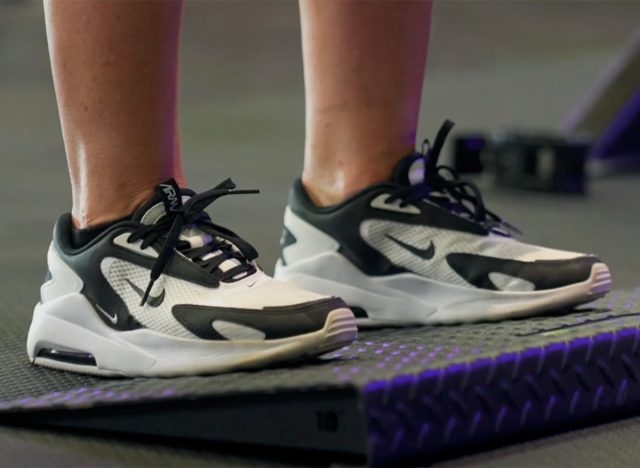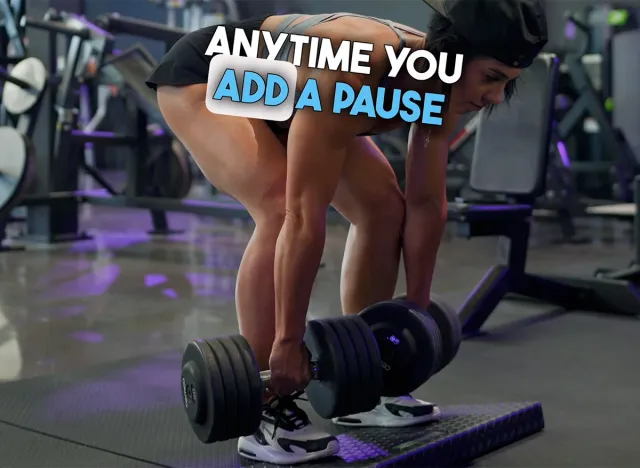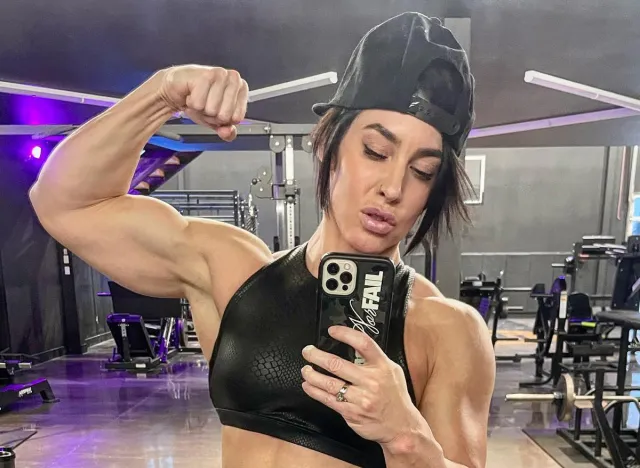3 Ways to Get a Firmer Backside, Says Dana Linn Bailey
Are you doing an RDL the right way and maximizing the burn? Dana Linn Bailey is an American IFBB Pro fitness and figure competitor who has amassed a large following on social media, with 2 million followers on Instagram alone. In a recent YouTube post, the fitness expert sheds some helpful knowledge on how to do a Romanian Deadlift properly. "Alright, three tips for your RDL," she says at the start of the clip. Here are her tips – and everything else you need to know about the popular exercise.
Add Toe Elevation

Her first tip is to add a toe elevation. "Adding a toe elevation is going to create more stretch in your calf, which also creates more stretch in your hamstring," Dana explains.
Pause After a Rep

Her second tip? "Make it a little bit harder as you come down," she recommends. "Pause at the bottom. A dead stop. Anytime you add a pause to a rep, it takes that momentum out. Creates more time under tension."
RELATED: 2 Secrets to Boost Your Running Motivation From a Running Coach
Butt to Your Ankles

"Last tip is get that butt back," she says. "In order that you know that you're getting your butt back, those weights are going to be really close to your feet, butt to your ankles. Stiff legged dead, your weights are going to be out by your toes. RDLs, get that butt back. Weights towards your ankle."
How to Do an RDL

How do you do a RDL? "Holding a barbell with both hands so that it rests on the front of the thighs, keep a slight bend in both knees and a straight back," explains ACE Fitness. "Push the hips back while lowering the weight towards the floor until feeling some tension along the back of the legs. To return to standing, push the heels into the floor and pull the knees backwards, keeping the bar very close to the body while standing."
RELATED: Jeff Nippard Shares 5-Point Checklist for Perfect Squats
Don't Make These Mistakes

An RDLS can do major damage to your back if you aren't taking the right form. "If done improperly with a rounded back this exercise can cause major stress on the lower lumbar area of your back and result in a possible lumbar disc injury," Kendra Gamble, HIT Fitness Training, Huntingdon Valley, PA, NPTI Certified Personal Trainer and Nutritional Consultant, tells The Body Network. She emphasizes the importance of tightening your entire core "so that it helps brace your back, keep a neutral spine the entire time, and lift with your legs (like you're pushing them into the floor) instead of your back."
💪🔥Body Booster: Add a set of RDLs to your workout routine, and try incorporating these tips. And if you enjoyed this article, don't miss This Is Exactly How to Lose Body Fat This Year.





